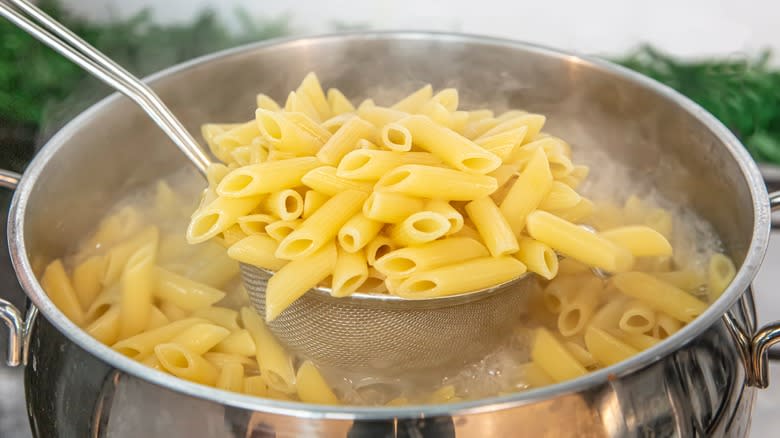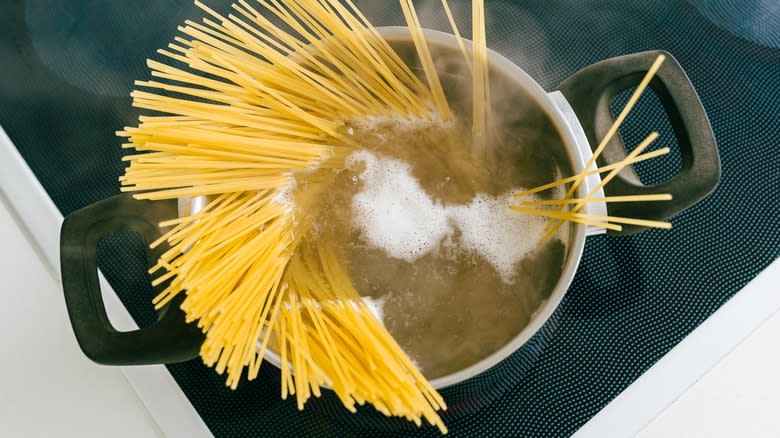The Golden Salt-To-Water Ratio For Any Pasta Type

Pasta is a comfort food that's as easy to prepare as it is deliciously versatile. Whether it's spaghetti, penne, fettuccine, campanelle, cavatappi, macaroni, or any other pasta shape you love to use, the cooking instructions for each style don't vary much across the board. In addition to the obvious element (noodles) and water, salt is a fundamental ingredient in most recipes of the soul-soothing, carb-forward meal.
While pasta is relatively bland by itself, salt effectively amplifies its taste and texture, making each forkful, twirl, or slurp more palatable. Some chefs don't think salting pasta water is necessary, especially since the sauce, oil, herbs, spices, and other toppings should contribute plenty of flavor. However, when salt is sprinkled into the vessel of boiling water, it infuses the pasta with a subtle seasoning, ensuring even the innermost layers offer a wonderfully al dente bite. So, therein lies the question: How much salt should you add to the pot when cooking pasta?
Many chefs and pasta enthusiasts recommend a heaping tablespoon of salt per gallon (4 quarts) of water or per pound of dry pasta. By following this ratio guideline, the saltwater imparts a delicate flavor to the otherwise savorless pasta. Moreover, salt increases the water's boiling point, which allows the pasta to cook evenly and thoroughly compared to a pot of plain water.
Read more: 16 Little-Known Facts About Salt
Add 1 Tbsp Of Salt Per 1 Gallon Of Pasta Water

A helpful tip is to taste the water after the salt has dissolved. It should have a pleasant, mild saltiness reminiscent of seawater but not excessively briny. If you find you've accidentally overdone it with the sodium chloride, there are a few tried-and-true ways to mitigate the situation.
One approach is to dilute the saltiness by pouring more unsalted water into the pot. This helps balance out the salt concentration without affecting the cooking process significantly. You can also rescue oversalted pasta by draining it and rinsing it with cold water.
In reality, only a fraction of the salt is actually absorbed by the pasta. Much of the salt remains within the pasta water — a byproduct commonly dubbed "liquid gold" by chefs, due to its flaxen hue, silky feel, and impressive ability to thin out viscous sauces, gently separate sticky noodles, and add a glossy sheen to the plated masterpiece. The absorption rate of salt varies depending on factors such as the shape and thickness of the pasta and cooking time, but in general, about 1/4 of a tablespoon of salt is absorbed by an entire pound of pasta.
Read the original article on Mashed

